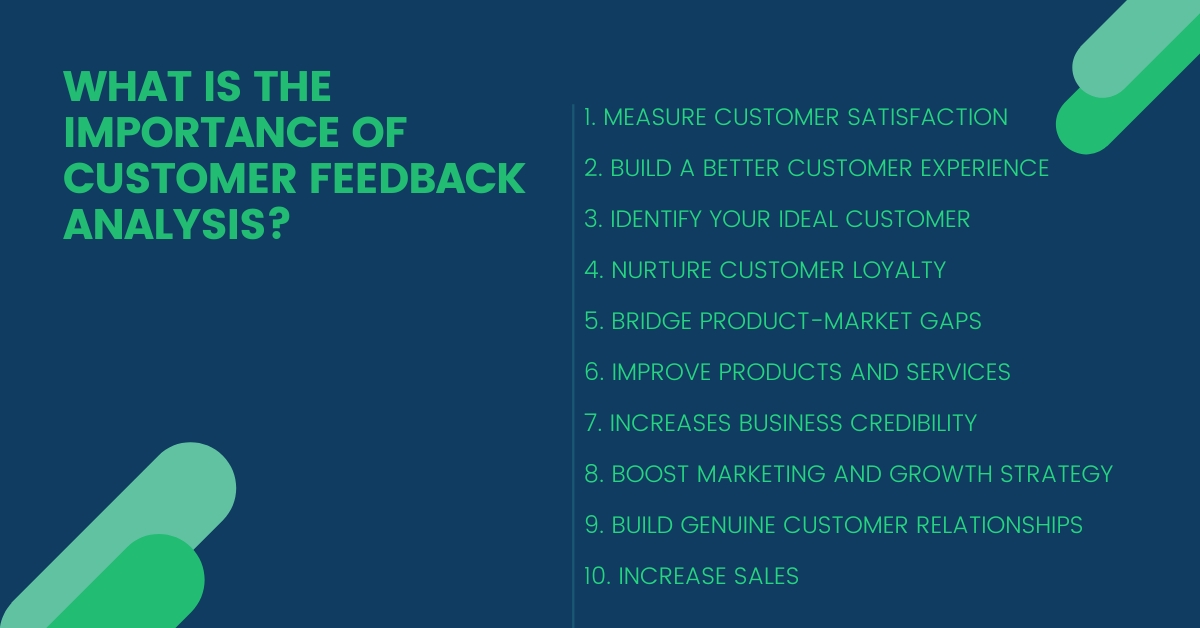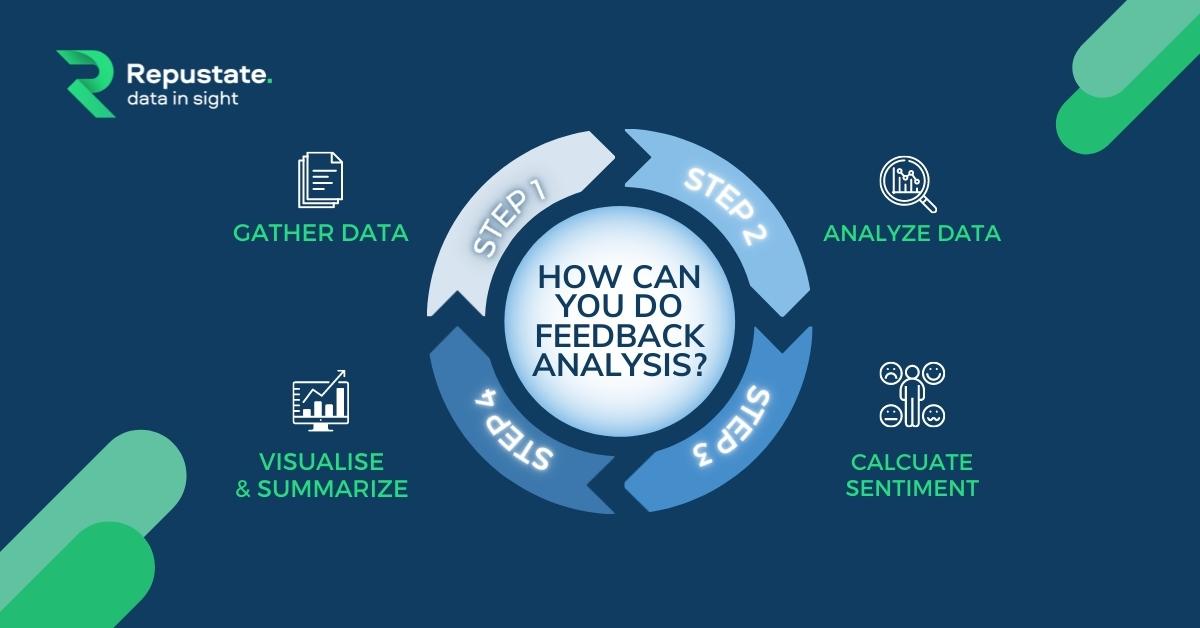Why Customer Feedback Analysis Is Critical To Your Business
The most important element in a company’s business strategy is finding the trajectory towards sustainable growth. Customer feedback analysis is essential to this need. Without customer feedback analysis, a company is essentially just shooting in the dark as it tries to figure out the best way to optimize its resources, please its customers, and build its brand. So let’s take a deeper look at the most significant ways in which feedback analysis can help a business.
What Is Customer Feedback Analysis?
Feedback analysis helps you understand customer experience, identify customer needs, and fill the gap in customer satisfaction by improving products and services. It gives you deep insights into what motivates different categories of customers, the best way to connect with them, and how sales patterns are affected at different timelines.
More importantly, by using a machine learning platform built for voice of the customer analysis, it also tells you concrete ways in which you can make changes to serve your customers better and build customer loyalty.
What is the Importance Of Customer Feedback Analysis?
Customer feedback analysis helps you understand market dynamics, measure customer satisfaction, and develop effective strategies for growth and profitability. Here are 10 ways in which feedback analysis is critical to a business.

1. Measure customer satisfaction
Customer feedback analysis plays a significant role in telling you how happy or unhappy your customers are with you. This gives you insights that you can use to build a more compelling brand experience for your target market - not only for your immediate customers but also for potential ones as you strive for an improved market share.
2. Build better customer experience
Customer experience analysis of your feedback data can directly help you develop effective strategies to improve your customer experience. Do your customers experience problems with their online purchases? Do they have issues with returns and warranties? Are they happy with their reward points? You can club your feedback into numerous categories like this and see what finer details you can extract for more nuanced information. (We will read more about this in the next section.)
3. Identify your ideal customer
Knowing what really is the issue that keeps cropping up in your customer feedback analysis can also tell you a lot about who your ideal customer is. Sometimes, the reality is, that the problem is not with your product or service but simply the target audience to whom you are catering. Analyzing customer feedback can give you this insight in close quarters.
4. Nurture customer loyalty
Customer retention is a major factor that can affect your overall revenue. When you can turn casual customers into loyal ones who turn to you whenever they need you, you’ve won half the battle. Studying customer feedback for sentiment analysis can tell you what exactly you can do to improve customer retention and loyalty. You can also get trends in sentiment over time that can give you many pointers on how to nurture your customer base better.
5. Bridge product-market gaps
Voice of the customer in terms of feedback can also help you bridge the market-product divide. Perhaps there are things that customers want from a product that could make the very bit of difference that can catapult a business’ popularity. Youtube comments analysis, for example, can tell a make-up company what customers like and expect from a product and what a company can do to overcome the issue.
6. Improve products and services
Similar to bridging the gap between market demand and product supply, customer feedback analysis can also give you direct ideas as to how you can improve your products as well as services. For example, when you see the Britbox user interface getting better, it’s because the company is reviewing customer feedback in order to improve customer satisfaction. It just goes to show that if a business indeed wants to remain relevant and flourish in a competitive market, it needs to make its customer feedback count.
7. Increases business credibility
Having customer feedback on Amazon, Google, Trustpilot, or any other medium is not only good for you but also builds your reputation in the marketplace. The more reviews you have, and the more you respond to these reviews in the appropriate manner, the more people associate your brand with being credible. In a world where fake companies and sellers freely use e-commerce platforms like eBay and Amazon with abandon, having customer feedback publicly available for scrutiny by people adds to your credibility as a business.
8. Boost overall marketing and growth strategy
You can gather customer feedback from traditional methods like surveys and review websites but don’t forget social media either. You can get immensely useful customer feedback analysis data points from TikTok insights as easily as you can get from Instagram social listening. All these varied sources of feedback can give you many hidden insights for bettering your overall marketing and growth strategy.
Learn more about Survey data analysis.
9. Build genuine customer relationships
Customer feedback also gives you the chance to develop a closer relationship with your customers. Every time you respond promptly and constructively to a customer complaint or acknowledge a customer’s positive remark, you are building a more genuine relationship with them. In the long run, this can be very beneficial for customer relationship management and building brand loyalty.
10. Increase sales
All these ways in which you use customer feedback analysis in a positive and efficient manner will ultimately lead to an increased sales conversion rate. Sometimes a long-term strategy can get you better results than an aggressive sales strategy, which can be expensive and not always viable.
Customer relationships are all about understanding people’s emotions and what motivates them. Sentiment analysis tools help you crack this code accurately and effortlessly while bypassing human errors and limitations. With AI-driven customer feedback analysis insights at your fingertips, building a great customer-driven growth strategy is easy.
How Can You Do Feedback Analysis?
Customer feedback analysis is done in 4 main stages as underlined below.

Step 1: Gathering & Study Your Feedback Data
In this step we gather a large stack of data for customer feedback analysis data and study patterns.
Step 2: Analyze & Categorize your data
We analyze the data so it can be categorized into various themes and topics.
Step 3: Identify & Calculate Sentiment
Once we have identified the most apt way to sort the feedback data, we calculate the sentiment for each category and topic such as “returns”, “billing”, “customer care”, etc.
Step 4: Condense & Share report
Once all the data has been analyzed for sentiment to review customer satisfaction with each topic, we share the report with the teams that are responsible for that category such as customer care, finance & billing, warehouse & dispatch, etc.
Conclusion
Customer feedback analysis is the pillar on which the sustainability of a business lies. While it’s okay to consider a manual analysis of voice of the customer data for a small batch of feedback, this process has to be automated when you are considering the analysis of hundreds and thousands of comments and reviews.
Repustate’s sentiment analysis solution for customer experience analytics uses machine learning-driven text analysis and emotion mining to extract the most important elements from your data to provide high-precision feedback analysis.
 Home
Home
 Jun 24, 2022
Jun 24, 2022

 Jeremy Wemple
Jeremy Wemple
 Dr. Ayman Abdelazem
Dr. Ayman Abdelazem
 Dr. Salah Alnajem, PhD
Dr. Salah Alnajem, PhD
 David Allen
David Allen

 Repustate Team
Repustate Team

